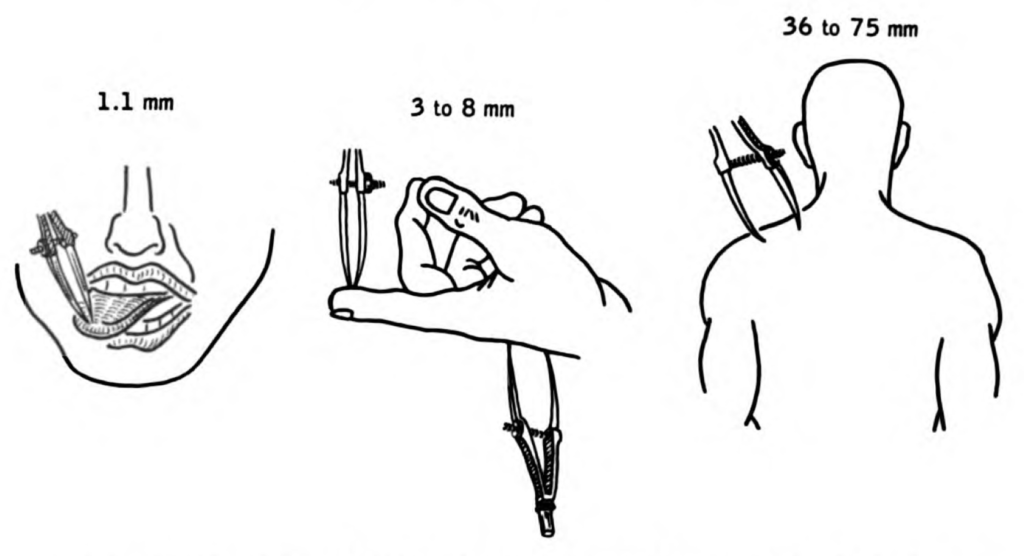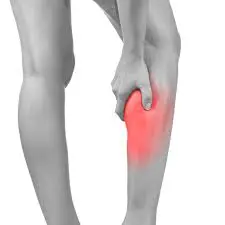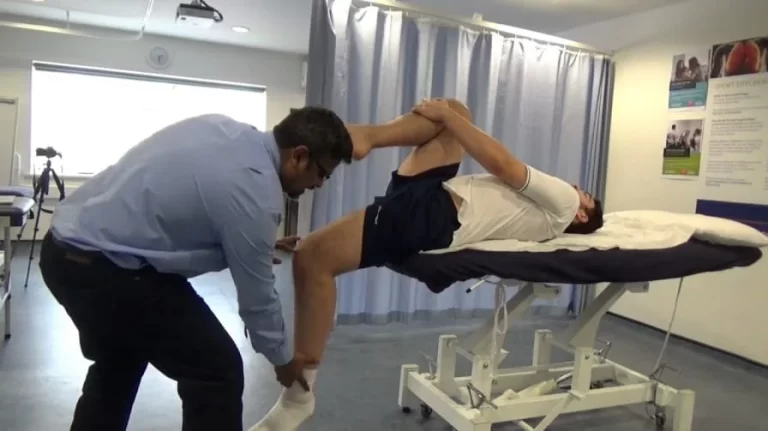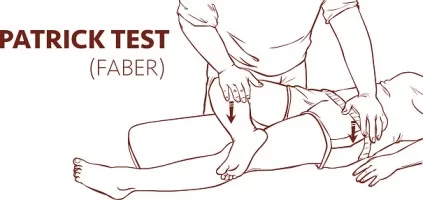Weber Two-Point Discrimination Test:
- This test is also known as Moberg’s Two-Point Discrimination Test.
- Two-point discrimination test is the ability to discern which is two nearby objects touching of the skin for truly two points of distinct, not to one.
- This is often tested with the two sharp points during the neurological examination.
- This test is assumed to reflect how finely innervated in the area of skin
- In clinical test settings, two-point discrimination for a widely used technique for assessing tactile perception.
- This test relies on the ability /willingness of the patient to subjectively report what the patient is feeling & it is completed when the patient’s eyes are closed.
The technique of the Weber Two-Point Discrimination Test:

- The examiner uses a paper clip, two-point discriminator, or callipers to simultaneously apply pressure on two adjacent points in a longitudinal direction or perpendicular to the long axis of the finger.
- The examiner [ therapist ] moves proximally to distal in an attempt to find the minimal distance at which the patient can distinguish between the two stimuli.
- The distance is called the threshold for discrimination.
- The patient must concentrate on feeling the points & must not be able to see the area being tested.
- Only the fingertips need to be tested.
- The patient’s hand should be immobile on a hard surface.
- For accurate results, the examiner [ therapist ] must ensure that the two points touch the skin simultaneously.
- There should be no blanching of the skin indicating too much pressure when the points are applied.
- The distance between the points is decreased/increased depending on the response of the patient.
- The starting distance between the points is one that the patient can easily distinguish.
- If the patient is hesitant to respond accurately on 7 or 8 of 10 trials before the distance is narrowed & the test is repeated.
- Normal discrimination distance recognition is less than 6 mm, but this varies from person to person.
- This test is best for hand sensation involving the static holding of an object between the fingers & thumb & requiring pinch strength.
What is the Normal & impaired performance of the Weber Two-Point Discrimination Test?

- Every person’s Body area differs both into tactile receptor density & representation of the somatosensory cortical. Normally the person can recognize the two points separated by 2 to 8 mm on fingertips.
- On the lips, this Two-Point Discrimination Test is 2 to 4 mm.
- On the palms, this Two-Point Discrimination Test is to 8 to 12 mm & 30–40 mm on the shins or back.
- On the posterior column & medial lemniscus of the pathway is responsible for the carrying information of the involving fine & discriminative touch.
- So that two-point discrimination is impaired by damage to this pathway onto a peripheral nerve.
Value of the Two-Point Discrimination test:
| Two-Point Discrimination | Value |
| Normal | <6mm |
| Fair | 6 to 10mm |
| Poor | 11 to15mm |
| Protective | 1 point perceived |
| Anaesthetic | o point perceived |
| Winding a watch | 6 mm |
| Sewing | 6 to 8 mm |
| Handing precision tools | 12 mm |
| Gross tool handing | greater than 15 mm |
- Weber’s two-point discrimination test is the most common method used for the assessment of the sensibility of the upper limb extremity.
- Amount of force is applied between the one & two points easily exceeds the resolution/sensitivity threshold for the normal sensation.
- Tremendous variance in the pressures is applied resulting in poor levels of the inter rater reliability.







